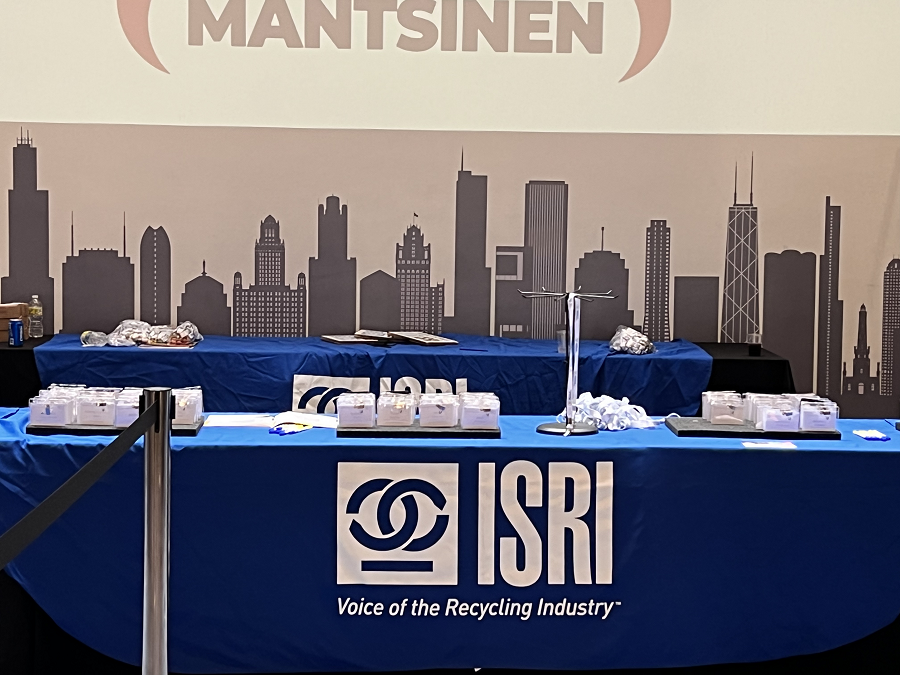Paul White, secretary-general of the International Copper, Nickel, and Lead and Zinc Study Groups, launched the Nickel/Stainless Panel at The Roundtables 2022 on Wednesday, Sept. 14, by talking about the current economic outlook for the metal. He noted how the International Monetary Fund (IMF) published its latest outlook in July and highlighted that GDP growth for the year would be slower than initially anticipated due to high inflation, rising energy costs, ongoing COVID concerns in China, and the war in Ukraine.
“Overall growth in most countries is expected to be positive but lower than last year,” he says.
The nickel market registered a deficit in the first quarter of 2022 but moved into a position of surplus in the second quarter. The most up-to-date information shows the market moving into oversupply. “The main reasons are production of nickel pig iron and weaker Chinese demand from the stainless-steel sector,” White says. “We saw gradual rise in the beginning of the year and then the conflict in Ukraine resulted in a squeeze of the LME [London Metal Exchange].” The International Nickel Study Group anticipates growth in primary nickel usage though it will be lower than the group’s forecast earlier in the year.
Edward Meir, senior commodity independent consultant for ED&F Man Capital Markets, discussed the LME nickel contract’s rocky start to 2022. On March 8, the LME suspended trading in its nickel market after prices skyrocketed, leaving brokers unable to pay margin calls against short positions. “At the time, everyone was upset about the cancellations, but I don’t think people realize how dangerous the situation would have been if the massive margin calls came through,” Meir says.
Despite an expected nickel surplus and the “hype” surrounding electric vehicles, Meir reviewed reasons why nickel prices have been struggling. He cited high inflation, rising interest rates, and the strong U.S. dollar. “[Inflation] is not just a U.S. problem, it’s a global issue,” he says. He anticipates that the nickel contract on the LME could be in the midst of a transition as people try to find alternative ways to make nickel sulfate—used for battery production—from nickel derivative products instead of Class 1 nickel and nickel powders.
“Nickel intermediate inputs are starting to be markets of their own, but we just don’t have a contract or index for them yet,” Meir says. He believes there is interest to develop a contract, and many are working on it.
“That’s why I think the current LME nickel contract is starting to fracture, because of diversification of the sulfate base away from class 1 nickel,” Meir explains. “There are other technologies out there to make more material through HPAL [High Pressure Acid Leach] technology that can convert nickel pig iron into [nickel] matte and then into sulfate in an environmentally friendlier way.”
He likens this scenario to the way nickel pig iron blossomed on the market as an alternative to pure nickel to produce stainless steel. There’s a growing demand for batteries and as people look for alternative materials to Class 1 nickel, they are trying to find workarounds.
Looking ahead, he also cautions that the EV infrastructure might not be in place to handle the push toward electric vehicles. “Governments are pushing deadlines for the car companies to go electric but I’m not sure they’re focused enough on securing the raw materials and setting the stage for a seamless transition, they’re putting the cart before the horse,” Meir says. “The U.S. has one nickel mine and it takes 10 years to [commission] another mine. The EV manufacturing and battery base is still very much dependent on Indonesia and China.”
He added there are many new battery technologies currently in the research stage. “We’re starting to see solid-state batteries, hydrogen batteries, zinc air batteries, and solar batteries,” he says. “These are still in very embryonic stages but betting on the same battery recipe in 10-15 years might not work out.”
Dave Bestwick, director of sales and procurement at Dominion Nickel Alloys, discussed how recycled stainless steel and nickel alloy markets have softened in September following tighter conditions in July and August. “I don’t know if it’s demand, or recession, or people trying to get their inventories back in check,” he notes. He also discussed the difficulty of shipping stainless steel to mills and stressed that providing superior customer service has become even more important given today’s challenging market conditions.
Photo Courtesy of ISRI.










